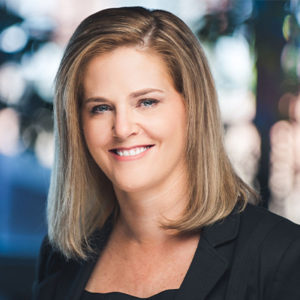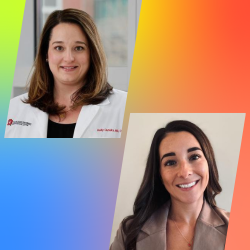Merck is putting time and resources behind an innovative effort to “train from the ground up” with separate Clinical Research Associate (CRA) Ambassador and intern programs that have already netted nearly 20 new Merck clinical trial professionals, says Jennifer Sheller, Merck GCTO (Global Clinical Trial Operations) Regional Head, North America.
The CRA Ambassador initiative is an optional activity for Merck employees who can in turn spend some of their “volunteer hours” reaching out to local schools and other gatherings to spread the good word of working in the clinical trial industry. Last year, more than 25 Merck USA Ambassadors reached out to more than 800 middle and high school students, college and university students, young professionals, and youth organizations. There has been a special effort to reach out to schools with greater minority populations to help further diversify the clinical trial workforce and help expand the diversity of trial participants, Sheller notes.
The clinical trial industry is in the grips of a chronic workforce shortage that shows no signs of abatement. “Most of us didn’t even know this was a career option” when we were in school, Sheller explains. Anecdotally, she is seeing positive impacts from the program already. “Students at receptions afterwards have told us they are changing their majors” and seriously considering focusing on a career pathway to conduct clinical trials as a result of the Merck visit, she says.
The outreach program is designed to increase youth awareness of clinical research as a profession and generate interest in science, technology, engineering, and mathematics (STEM) studies. The focus is on high school, college, or youth organizations to share how medicines are developed, create awareness that clinical research is a rewarding profession, and share the Merck employee’s own personal journey as an example.
Several participants shared their inspiring experiences:
- Monica Lloyd, CRA: “My presentation was part of Career day focused in STEM. I presented to four different 8th grade classes (about 15 to 20 per class). The students were in ‘awe’ of the CRA career. Although many of them don’t think about college and were wondering how could they do it … so I talked about going to tech school, emphasizing … ‘you can start as a study coordinator, get experience, and then go for your bachelor’s [degree] and climb to [being] a CRA.’” It was such a rewarding experience.
- Mary Ricker, CRA: “I was a guest at a local school to present the Ambassador Program information. After the presentation, several of the classes voted me Scientist of the Week! They sent me thank you notes!”
- Michelle Langston, COM: “[It was] the most gratifying, amazing experience. I have a new appreciation for educators because I was exhausted but happy. Over two days, I spoke to seven classes and hundreds of first-year and STEM students. The students were highly engaged and posed some very thought-provoking questions. The slide that generated the most discussion was [on] the development of new [drugs]. They were fascinated to discover it took 10 to 15 years to approve one drug at a cost of 1 to 2 billion dollars. Finding out about the clinical research associate profession was greatly appreciated by a great number of students, and they wanted to research the position for further consideration. I even had a few first-year students tell me after the presentation they were considering changing their majors. I was flabbergasted at the response.”
Good news usually inspires and attracts, and that’s the case with the Merck program’s future, says Sheller. “The program is catching on internally and it’s going to grow in 2020,” she notes. “I encourage all STEM professionals to get out there and help to build our future workforce and mitigate the gaps.”
Author: Michael Causey, with special contribution by Ellen Balestreri, site account manager at Merck.



